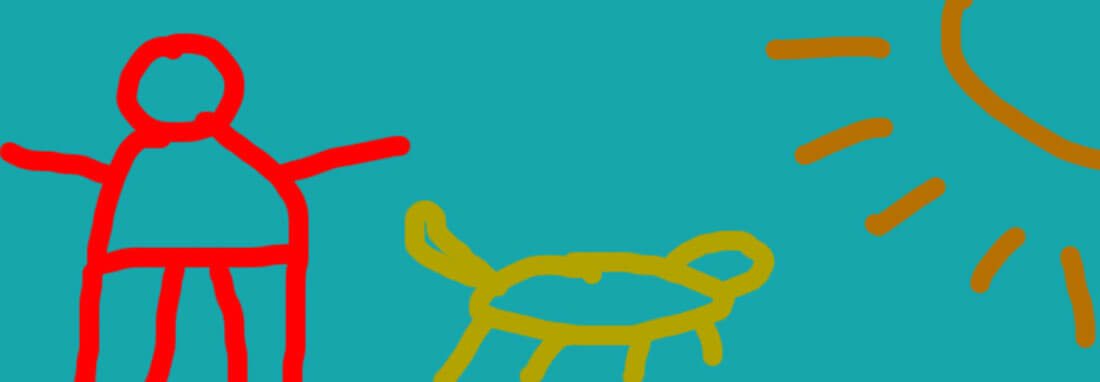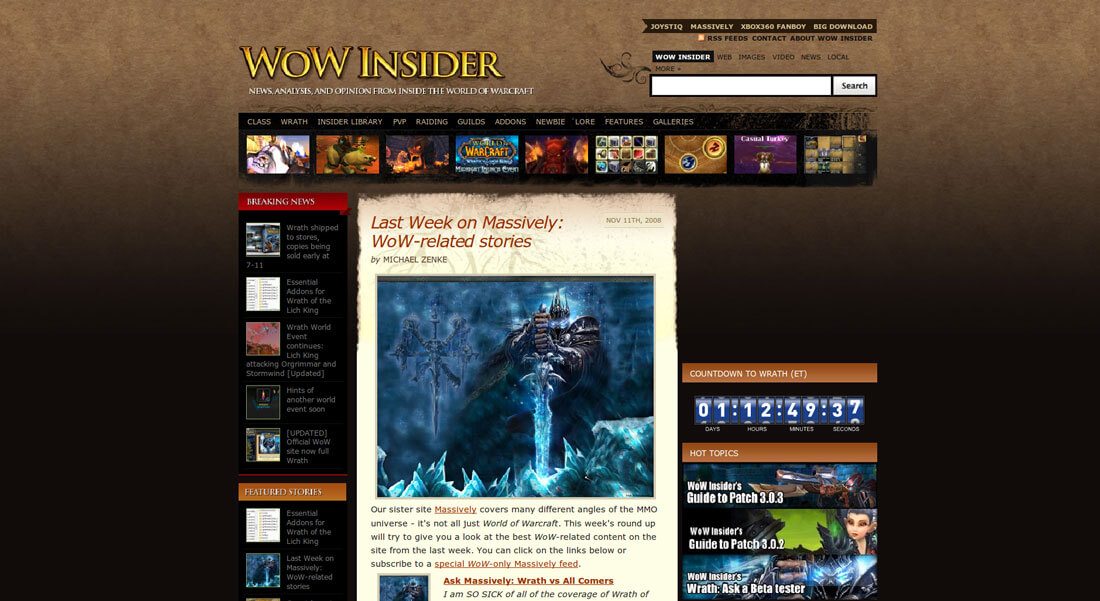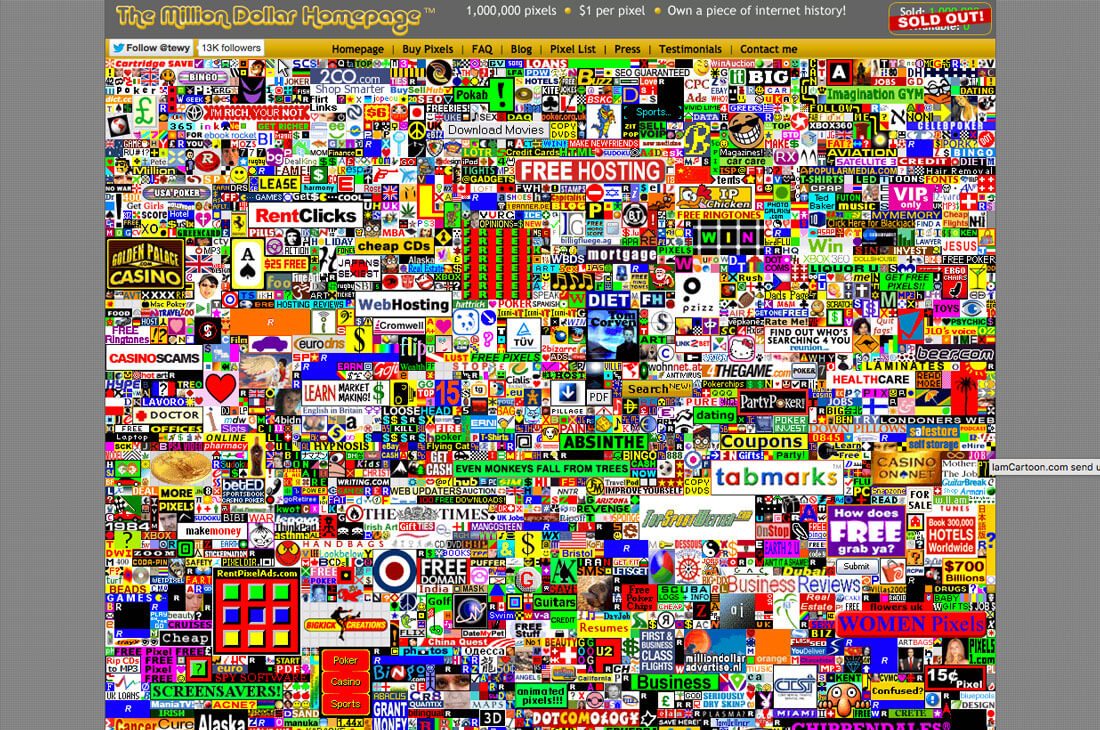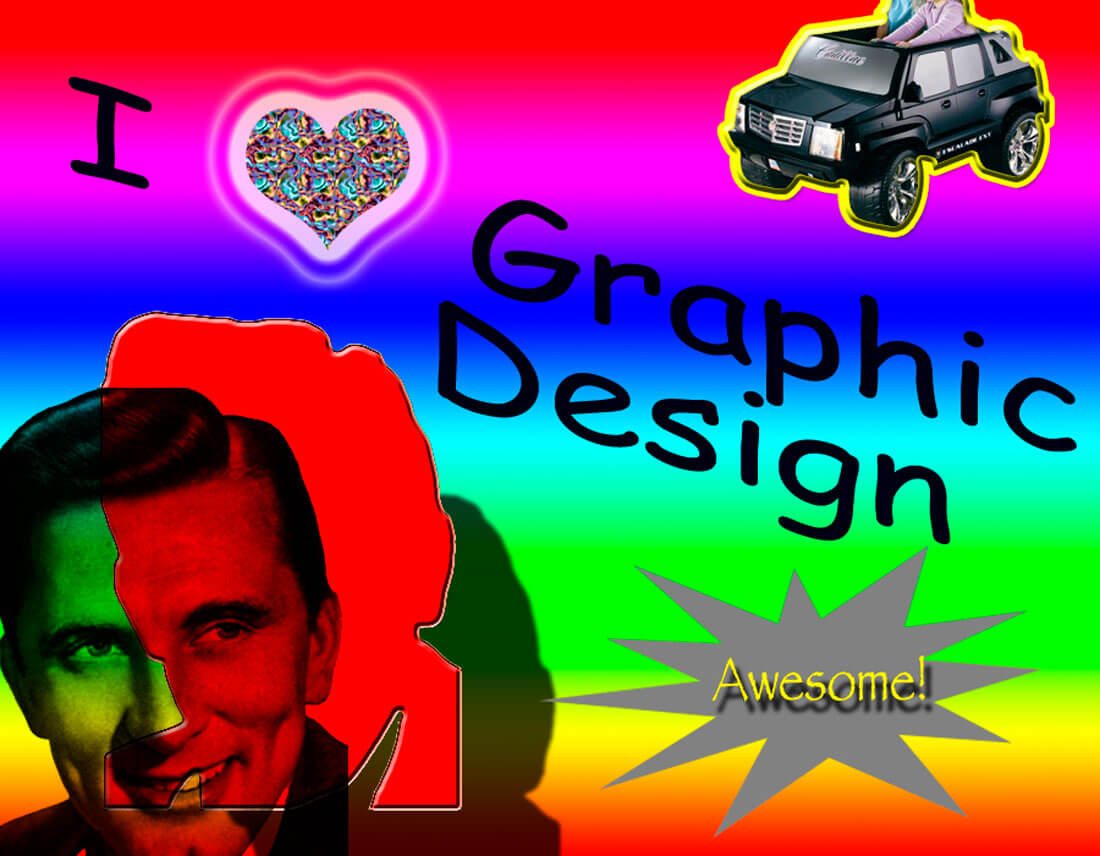Have You Ever Created Something Bad… on Purpose?
Be honest. Have you ever created something that was just bad? Now, have you ever designed something bad on purpose? It’s a strange concept, but one that we’re going to be exploring more today.
Sometimes designing something bad can actually yield a positive result. Not sure about that idea? Read on and you just might change your mind. (Then think about each example of a “bad design” and how you could fix it.)
Work Without Restrictions

Give yourself permission to not be perfect. You might be surprised at the results.
Admit it. You likely start every new project with the same mentality: This project is going to be amazingly creative and something people are going to rave about. (Well, maybe not that ambitious, but you get the idea.)
But sometimes, with some projects, you need to give yourself permission to work with fewer restrictions. Here’s an example:
I am a two-typeface person. You probably won’t find any of my work with more than two typefaces. It’s a rule that I have imposed on myself. I know it’s a good idea, but there are times when this rule gets in the way. So my goal is to complete a project that innately I would see as bad because it uses four or five typefaces. (I’m still trying. I’ll keep you posted when said project sees the light of day. Maybe you will have better luck than I have.)
Teach Yourself to Edit
Bad design has the wonderful side benefit. It can teach you to better edit design projects.
Look at the bad design from plenty of different angles, examine it, pick it apart. Figure out what about the design makes it bad.
And then make it better.
This skill will help you in your own design work, but will prove even more valuable as you grow in your career and mentor others. It can also help you see things from other perspectives and understand suggestions from others.
It’s What the Client Wants

If you are anything like me, you’ve had the client that wants something, that’s just bad. They love Comic Sans or hot pink everything. And you don’t like it. Not one bit.
Unless you have a pretty flexible client, and an amazing way with words, chances are you will design the bad thing to make them happy. (The client is always right … right?)
Where this gets hard is when you think about yourself. You don’t want others to know you designed this “bad thing.” You don’t want that type of project in your portfolio. That is more of a question of whether you should take the client in the first place. (And we’re not getting into that here.)
A lot of times, what a designer considers bad design and what everyone else sees as bad are two very different things. Designers are looking at it from a purely aesthetic perspective … and some usability as well. Everyone else is just looking at it. They aren’t thinking about it. They aren’t analyzing it. They are just looking at the design and hopefully completing whatever action is intended. And if they do that, no matter how it looks, the design must be good in some way.
What often happens is that designers (yes, I’m included here) call things bad when they fall out of fashion. A project that still uses a background with a heavy texture is bad. Gradients in icons are bad. And the list goes on.
But these things aren’t bad on their face. It’s all about how the technique is used. Yes, it might not be stylish, but that does not mean it is bad.
Bad Design vs. Different Styles

That idea is where we really start to think about design preference. Bad design versus different styles of design.
Challenge yourself to take something you think is bad and recreate it in the same style, but tweak the techniques. Sometimes something as simple as an overly dark drop shadow can run the look of something.
Try to think about bad design as different – yes, there are a lot of bad designs out there – but is that part of the style? Is that “badness” purposeful? Does it contribute to the message or meaning?
Think about the goals of the project in relationship to the bad design. Does it work? The Million Dollar Homepage is one of the ugliest websites you’ll come across. It’s packed with stuff, like a hoarding page on the Internet. But is it bad?
The creator sold $1 million in ads, filled the page and was done. It doesn’t include any of the features that are necessary for building a successful website today. (The website has not changed in more than 10 years.) You could argue that the design of this project is actually pretty brilliant, even if it is hard to look at.
“Bad” Trends

When flat design first emerged, there were quite a few people who blasted the technique and though the design was bad. They worried about usability. They worried about too much color. They worried people wouldn’t understand it. And mostly, they were wrong.
Flat design was new and trendy and scared some people. That does not make it bad.
New trends also tend to evolve as well. The first iterations aren’t the end all of the design style, as we clearly have seen with flat design. It keeps changing to make the style even more usable.
You have to start somewhere, right?
It’s a Learning Experience

It’s the phrase we’ve all come to hate – “it’s a learning experience.” But there’s some real merit to it.
When you try something different or outside your comfort level, chances are you will think that it is bad. But is it really?
Think about the design with a fresh set of eyes – even if you have to come back to it months or weeks later. What parts of it worked? What made it bad? Look at it with a critical lens.
Then think about how you actually put the design together. What tools or techniques did you use? Did you try something new (and maybe it didn’t work out)? What are the takeaways there?
Sometimes it’s a lot easier to honestly critique and pick apart something that’s deemed bad because you don’t worry about hurting feelings or stepping on toes. Use your bad project to create just this learning environment for you and maybe even the rest of your design team or peer group.
Conclusion
I’m leaving you with two challenges today:
- Design something bad on purpose.
- Rethink your idea of bad. Is it a word that should be part of your design vocabulary?
Bad design is so subjective. Before you throw out this word, think a little more about the project and if the so-called bad design serves the right mission. Yes, there are design out there that just don’t work. (Maybe even more than designs that do.) But before you call something bad, you should learn to articulate why, and offer a suggestion for improvement.
Image Sources: Sean MacEntee, Stuart Williams, Aigars Mahinovs, Dan McCullough and Craig Keeling.